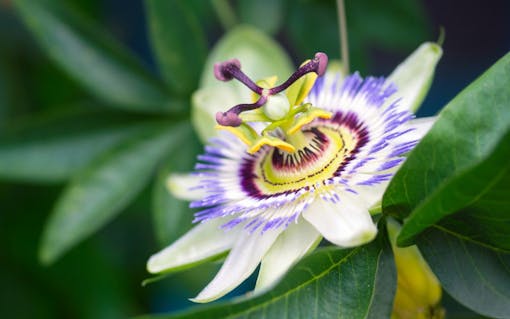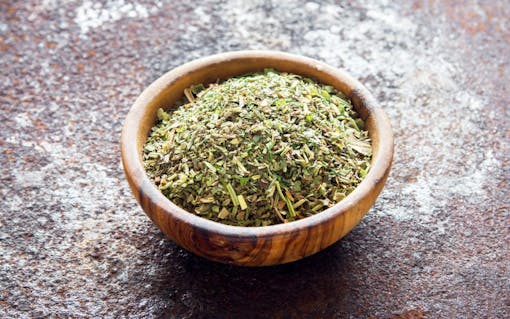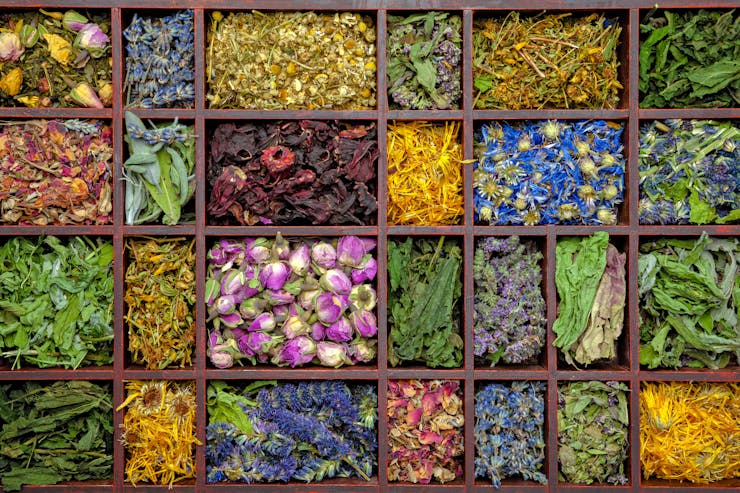Updated 2/11/2022
There’s a visceral feeling attached to the act of smoking: the flicker of flame, the herbs turning to ash, the taste and the curl of smoke as it exits your lips. For the smoker, it is often a ritualistic part of the day—sometimes performed alone, sometimes with company, but always with an herb of choice.
Straying from cannabis or tobacco is somewhat uncommon, but there are a variety of herbs out there that can be enjoyable to consume on occasion as well, either by themselves or coupled with an herb like cannabis. Their purposes can range widely.
Some are relaxing; some can be smoked legally in public; some provide tobacco alternatives for spliff lovers; some are a good base to add to joints for the purpose of conserving cannabis reserves. As for those who simply like to explore new botanicals or craft smoking blends, these herbs simply offer a sensory adventure.
On my own smoking journey, I acquired several organic herbs to see which ones paired best with cannabis. Read on to learn about the flavor, aroma, and body of some lesser-known smoking herbs, and how they can complement the flavors of your favorite strains.
The rising popularity of herbal blends and cannabis
In recent years, these types of herbal blends have become more and more popular, with several companies offering cannabis pre-rolls heightened with a plethora of interesting and flavorful herbs.
I began my research into herbal cannabis joints several years ago, but in lieu of its rising popularity, I’m revisiting the topic to bring you even more tried and tested herbal choices that blend well with cannabis.
Read on to learn about the flavor, aroma, and body of some lesser-known smoking herbs, and how they can complement the flavors of your favorite strains.

Be sure to consult with a professional regarding contraindications before consuming a new herb. Some of the following herbs may have contraindications with common medications, have the potential for allergic reactions, or may not be recommended for people with certain health conditions.
Even today, there remains little research or studies on the safety of smoking most herbs. Exercise caution and remember that smoking, in general, can pose a health risk. And be sure to source your herbs from a legitimate source.
Rose, for example, maybe plentiful at your local market, but needs to be specifically grown for consumption or it may have been exposed to dangerous chemicals. Do your research, speak with a professional, and get ready to expand your horizons.
Rose

Origins and uses
Rose – one of the most ancient and iconic flowers, can also be a part of your herbal cannabis blend. Available in a wide range of colors and varieties, rose has the familiar, intoxicating scent we all love. Rose has been used for thousands of years in skincare and for its antioxidant and mineral properties. In recent years, you may have seen people using the malleable petals in place of a traditional blunt wrap – creating beautiful and tobacco-free blunts.
Flavors and aroma
Rose has a very pleasant smell, just a little bit sweet, almost detectably florally. The petals themselves have an almost candy-like aroma when dried and ground up. The flavor was subtle but bright and fresh, with a mild rose taste. I paired it about 40/60, but think you could go higher for more of a rose taste.
Texture and effects
Rose burns nice and slow, making it pair very well with cannabis for a soft even burn that doesn’t go out too easy or too often. It’s easily crumbled and doesn’t require a grinder to get it nice and fine. It posed no challenges when rolling it up with a favored strain. The effects were calming and very peaceful, in a sort of easy-going, bucolic way. It’s a mood booster, and some also say an aphrodisiac, so it may be a keen choice for date night.
Pairing rose with cannabis
When added to cannabis, rose gives offers a refined, almost luxury feel. Due to its calming effects, it will pair very nicely with most sedative strains and would be particularly nice for an after-dinner relaxation blend. Think of it as the red wine of herbal blends. With rose’s flavor profile, it will go nicely with any strain featuring floral or citrus flavors, and I suspect, would also be an interesting addition to your favorite diesel strain.
Lavender

Origins and uses
Native to the Mediterranean, Lavender is most famous for its relaxing, soothing scent. A colorful perennial evergreen shrub – while most are familiar with its use in essential oils or even desserts, fewer know that it can also be enjoyed in a smoking blend.
Flavors and aromas
Lavender holds no surprises in its smokeable form. Floral, bright and soothing; paired with cannabis it adds a lavender taste that takes any linalool terpenes in your flower to the next level. Its scent is familiar but stronger as it burns, like a thick lavender incense rather than the more familiar, dainty smell.
Texture and effects
The flowers are delicate and tiny enough that they don’t need to be broken up to be rolled up. It fits seamlessly into a joint and will leave your fingers with a lingering lavender scent that is definitely a bonus. It smokes cleanly and is subtler than you’d expect from an herb with such a powerful aroma. I found it relaxing and familiar.
Pairing lavender with cannabis
For an herb known for its calming properties, Lavender makes perfect sense as an accompaniment to a bedtime indica. Choose this for relaxing moments or when you need to unwind and de-stress. Pair it with strains that are high in linalool to maximize the lavender punch, or opt for complementary terpenes such as pinene or eucalyptol.
Passionflower

Origin and uses
Passionflower is a perennial climbing vine, indigenous to several regions including South America, Asia, and parts of the United States. The plant boasts beautiful flowers with unique, intricate petals in a flamboyant display.
Passionflower is said to quell anxiety, soothe the mind, and calm restlessness.
Flavor and aroma profile
At first whiff, passionflower may not seem too appetizing. I found it to have a strong grassy smell that was generally unappealing. However, upon smoking it, it was discovered to have a more palatable profile. The flavor is earthy, with a mellow, clove-like aftertaste and a bit of bite. It was a pleasant, smooth smoke.
Texture and effects
The herb is very bright and visually pleasing, with a variety of interesting shapes and shades to its leaves. It has large stems to pick out, but I found the herb to be easy to break up and roll. Passionflower has a subtle, mildly sedative effect that is soothing to the nerves.
Pairing passionflower with cannabis
Passionflower is a beautiful complement to a cannabis high. Its mildly sedative effects are perfect for balancing out potent, high-THC strains that some users may find too stimulating. In addition, passionflower has a warm, clove-like flavor that pairs nicely with spicy strains dominated by caryophyllene—the peppery terpene—such as Hash Plant.
Damiana leaf

Origin and uses
Damiana is a shrub native to regions such as South and Central America, the Caribbean, and Southern Texas. The plant produces bright, attractive yellow flowers. Its aromatic blossoms eventually give way to fig-like fruits later in its season.
Damiana has been used traditionally as an aphrodisiac since ancient Aztec and Mayan times. It is also reported to have soothing, relaxing effects on the body and mind.
Flavor and aroma profile
Damiana is pleasing in look, smell, and taste. It is a flavorful herb, best described as minty and spicy, with a hickory-like taste. Overall, it delivers a smooth smoke. Its scent fits this profile as well, being mildly spicy, with hints of anise and citrus.
Texture and effects
Its small, green leaves are easy to break up, with hardly any stems to remove. It rolls easily and burns very slowly and cleanly. The effects of damiana were found to be relaxing and mood-enhancing. It was soothing to the nerves and has subtle, pleasing, euphoric effects. Of all the herbs I smoked, damiana emerged as my favorite (apart from cannabis, of course).
Pairing damiana leaf with cannabis
Damiana on its own is a very relaxing herb, so when paired with cannabis it creates an herbal smoke cocktail built for releasing tension. To create such a spliff, pair it with a soothing indica strain. Damiana’s hickory and mint flavors are also well suited for a bright but earthy strain such as those high in pinene—the piney terpene. For a strain that fits both of these bills consider the hybrid Super Silver Haze.
Mugwort

Origins and uses
Mugwort has purple stalks and dark green leaves and grows in North America, Northern Europe, and Asia. This herb has a history of uses connected to the uterus and menstruation issues. It is also said to help address stomach issues, anxiety, and low energy levels, and it can reportedly induce lucid dreams, among other uses.
Flavor and aroma profile
Mugwort has a scent akin to green tea and a taste reminiscent of sage. It is spicy and nutty with a touch of musk that can be likened to a mild cigar or cigarillo flavor. It has a slow, smooth, even burn and produces light plumes of smoke that are sometimes a little harsh. However, it can be pleasant and enjoyable in small quantities.
Texture and effects
Mugwort is fluffy and soft with a cotton-like quality that allows the herb to stick to itself, making it easy to roll. There are many stems but they are simple to pick out.
Among its historical uses, mugwort is said to induce lucid, vivid dreams. Personally, I did experience very active dreams but this is already a common occurrence for me, so I am not able to offer a conclusive report on the herb’s effects on sleep and dreams.
Pairing mugwort with cannabis
Mugwort may not have any overtly sedative or relaxing effects the way cannabis can, but it still makes an excellent herb to fill a spliff. Due to its reported ability to affect dreams, it’s a particularly good choice for a soothing bedtime medley. Its sage flavor pairs delightfully with strains high in linalool—the lavender terpene. Try G13 for a sweet-tasting strain that will lull you to sleep for a night of mugwort-enhanced dreams.
Raspberry Leaf

Origins and uses
Raspberry leaf comes from the ever-popular raspberry plant, most known for its sweet red berries that come to life in the spring and summertime. Raspberry leaf is often utilized in teas by itself or in herbal blends all over the world, though it is native to North America, western Asia and parts of Europe. It is also part of the rose family.
Flavors and aromas
Raspberry leaf is the Queen of neutrality. This herb is perfect for pairing with cannabis when you want to highlight the taste and flavor of your flower but roll a heftier joint. In other words, it’s the lightweight’s best friend. Raspberry leaf has a very neutral taste and smell and won’t overpower its counterparts.
Texture and effects
Primarily fluffy in texture, raspberry leaf is easily intermingled with your favorite strain. Because it is a slow-burning herb, it’s also the perfect accompaniment for a communal joint. I found it to be a very convenient addition to cannabis, that acted as a support to our favorite flower without overshadowing her characteristics.
Pairing raspberry leaf with cannabis
The sky is the limit here! Raspberry leaf will pair well with any strain, so give it a go with your favorites. That said, it may be especially useful alongside those extra heady high THC strains that could use a little bit of grounding to keep you from floating off to outer space.
Mullein leaf

Origins and uses
Native to Asia and Europe, the short, shrubby mullein plant produces tall, colorful flowers and is most often perennial or biennial. For centuries, it has been smoked for its relaxing respiratory qualities. It is also said to have sedative and diuretic effects.
Flavors and aromas
Mullein has an aroma akin to black tea, and when smoked produces a smell reminiscent of a campfire. Its flavors are very light with woodsy undertones and a hint of cedar. It is a mellow herb, often used as a base in smoking blends, and though it has its fair share of bite, it offers a very smooth smoke and burns evenly.
Texture and effects
Mullein is very fluffy with soft fibrous leaves reminiscent of cotton or wool. It is easy to break apart and separate from the large stems. Due to its light and airy quality, it takes a little finesse to roll but is generally doable. I found it to make an excellent base herb with a mild, calming effect on a lingering cough.
Pairing mullein with cannabis
Mullein, at its heart, is the perfect base for an herbal smoking blend and can be used for various purposes. It works with sativas that will hold your attention while you study or indicas to unwind after a long day.
Its flavor is also subdued, allowing cannabis’s unique taste to shine through—this herb is a quiet sidekick that keeps the focus on the cannabis.
Skullcap

Origins and uses
A perennial, contrary to its intimidating name, skullcap has been used historically for a long time to treat stress and promote emotional wellbeing. It thrives in swamplands and is native to the Northern Hemisphere, and presents as a lovely green plant with bright purple flowers that is part of the mint family.
Flavors and aromas
Skullcap may not be for everyone, but those who like it – really like it. When passed around a group of seasoned cannabis smokers, opinions ranged from, “it’s okay,” to “this is my favorite pairing herb!” Some found the aftertaste a bit unpleasant or musky, but everyone seemed to agree that skullcap had an enjoyable cinnamon-like scent and a smooth flavor reminiscent of berries.
Texture and effects
Skullcap has a bit of bite to it, but offered thick, creamy plumes of smoke. The herb can be somewhat stemmy depending on where you source it from, so be prepared to possibly pick through before blending it with your cannabis for the best smoke and rolling experience. All in all, it was found to have a gentle calming effect that was very pleasant.
Pairing skullcap with cannabis
Skullcap can be found today in supplement form to treat a variety of ailments, and is said to be a possible benefit to those with inflammation, anxiety and insomnia. Try pairing it with an active sativa to reduce inflammation and get moving, or roll it up with some indica to relax, let go, and drift off to sleep at night. Try it out and see what you think before deciding how much cannabis-to-skullcap is the right blend for you taste wise – but a good strain high in myrcene will surely pair well.
Reminder: always consult a healthcare professional regarding potential contraindications or side effects of new substances.





